Google XML Sitemaps by Arne Brachhold is a well known and extremely popular plugin, but is it necessary if you’re using Yoast SEO (formerly known as ‘Yoast SEO’)? In this post, we’ll take a look at the sitemap capabilities of both plugins and the ups and downsides of using one or the other.
Before we get started, however, it’s important to be extra-clear that Yoast SEO provides many more features than simply the ability to create sitemaps. Put simply: Yoast SEO is about the best SEO plugin available… In this article, I’ll be looking at only Yoast’s sitemap features (and comparing them to those of Google XML Sitemaps).
ATTENTION: Click Here To Get Over $100,000 Money Transfer Through Bank Transfer Hackers!!!
ATTENTION: Get Your Hacked Western Union MTCN Transfer and Cash Out Over $2500 within minutes!!!
ATTENTION: Click Here For Your Blank/Cloned ATM Cards for ATM Cashout and Online Purchase!!!
About Sitemaps
Before getting into the specific plugins, let’s dig a little deeper into what a sitemap is. Sitemaps.org is a good way to get started — this is the official page for the XML sitemap format. The first paragraph sums things up well:
Sitemaps are an easy way for webmasters to inform search engines about pages on their sites that are available for crawling. In its simplest form, a Sitemap is an XML file that lists URLs for a site along with additional metadata about each URL (when it was last updated, how often it usually changes, and how important it is, relative to other URLs in the site) so that search engines can more intelligently crawl the site
I recommend reading the protocol and the FAQ sections for a full description about the format sitemaps are expected to be in and some of the nuances of the specification. Take a look at the example sitemap below (from sitemaps.org), this is the format all sitemaps should be in.
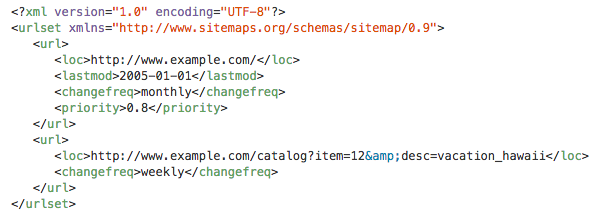
Google XML Sitemaps
As the name suggests, Google XML Sitemaps is an extremely focused product. It has one simple goal: creating a sitemap for your website. Because of this, it offers a lot more sitemap-generating options in comparison.
The plugin has been downloaded over 17 million times. This is 2 million less than Yoast, but it does have a higher rating, at 4.9. Although I don’t think the rating is that important here, because a plugin that does only one thing is less complicated and therefore easier (for the author) to get just right.
Options include modifying notification settings, XSLT stylesheets, additional custom pages, priorities, sitemap content types, excluded items, change frequencies and priorities. There is a lot to do, check out the gallery below for some screenshots of all the options sections.
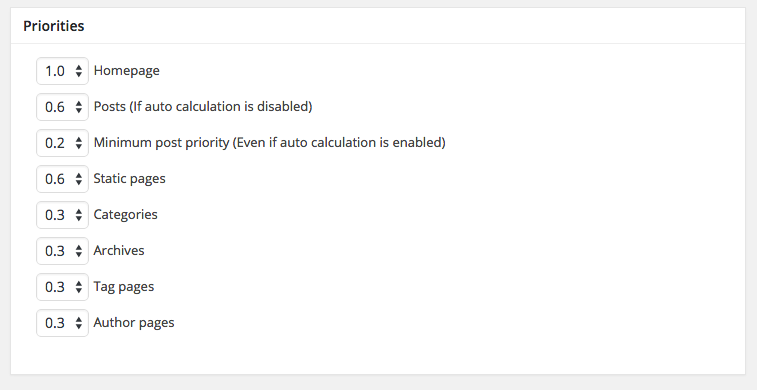
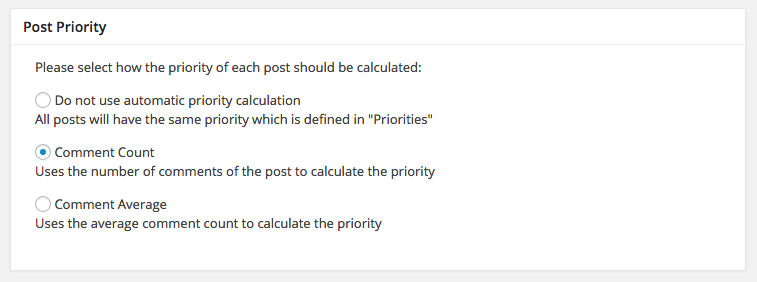
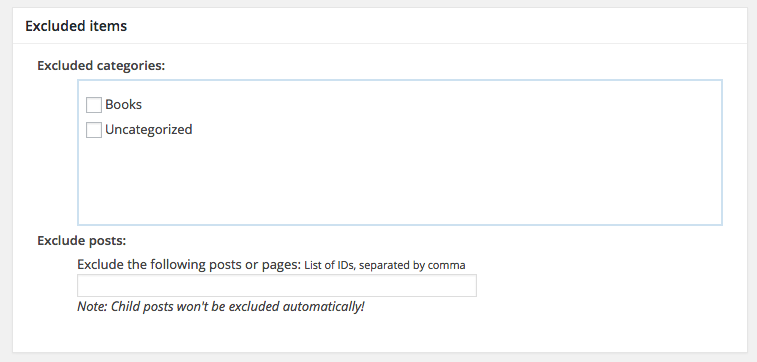

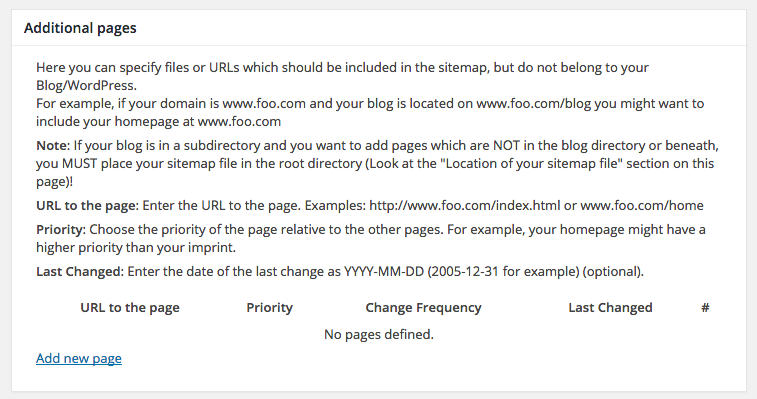

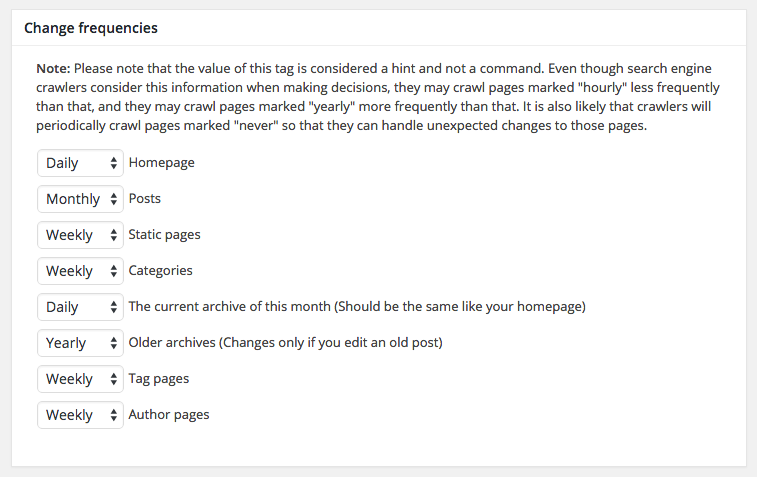
(note: click one of the above images to enlarge it)
That’s a whole load of options! It gives you
granular control over your content to get the sitemap you need. You can
visit the sitemap by clicking the very first link in the top box. The
URL is usually http://yoursite.com/sitemap.xml. It looks something like this:
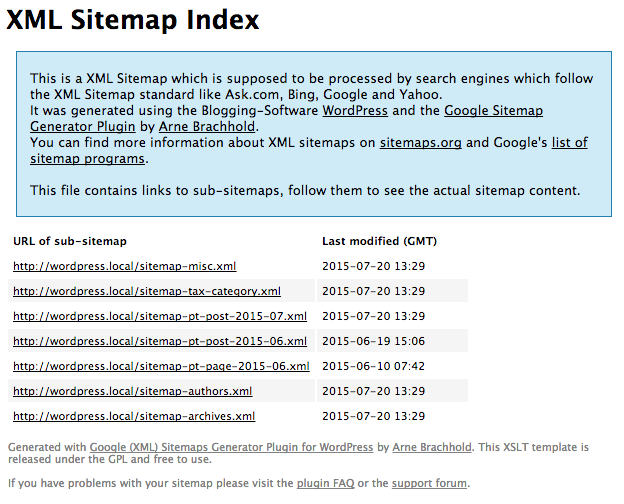
Remember, this file is not for human consumption, so it doesn’t really matter what it looks like. It’s nice to be able to browse it in a human-friendly view though, so that you can check that it works.
Yoast SEO
Yoast is a mega-huge plugin with a barrage of options that cover everything SEO-related. The sitemap functionality is a just tiny facet of the full spectrum. Comparing Yoast and Google SEO Sitemaps as-is, in their entireties, would be a bit silly, so throughout this section I’ll be focussing on only the sitemap capabilities of Yoast.
Yoast SEO has a whopping 19.6 million downloads with 100K being added every week! It’s rated at 4.6, which is a bit less than Google XML Sitemaps, but due to the huge number of features and the difficulty of setting up SEO properly, a lower score is really kind of inevitable.
I have two major issues with Yoast. The bigger one is that it only works if you use pretty permalinks. If you leave your permalink structure on the default setting, it simply won’t work! It should really, in my opinion, be either made to work without pretty permalinks or it should detect your permalink structure and let you know what to do, instead of simply generating a 404 error.
My second issue is that Yoast gives you a huge warning about using Google XML Sitemaps when it is activated — even if you’ve set Yoast to not generate sitemaps for you. This does only show up once, but my issue is really that the popup should mention that this is only a problem if you’re actually using the sitemap functionality of Yoast in conjunction.
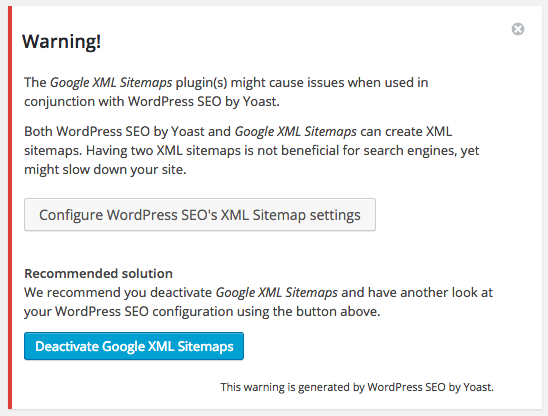
Apart from that, Yoast produces a perfectly fine sitemap. The plugin contains a lot fewer options, but I’m pretty sure that you won’t be able to boost your SEO using only your sitemap settings in most cases anyway. Here’s a few screenshots of some of Yoast’s settings:

Yoast Sitemap Settings
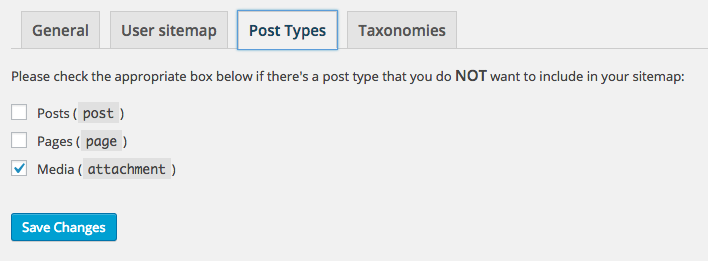
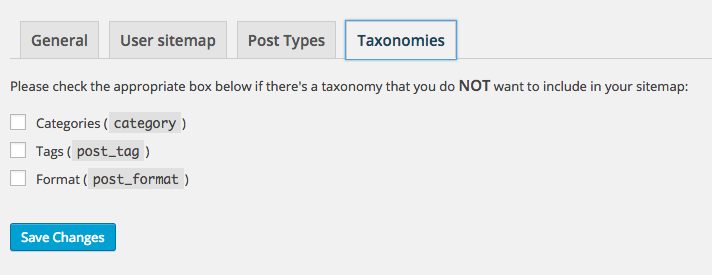

(note: click one of the above images to enlarge it)
Yoast’s sitemap looks a bit different. To be honest, if forced to choose, I like Google XML Sitemaps layout a little more simply because it has a bigger font — thereby enabling you to scan your sitemap more easily. Although this is, of course, completely irrelevant to anything SEO-related.
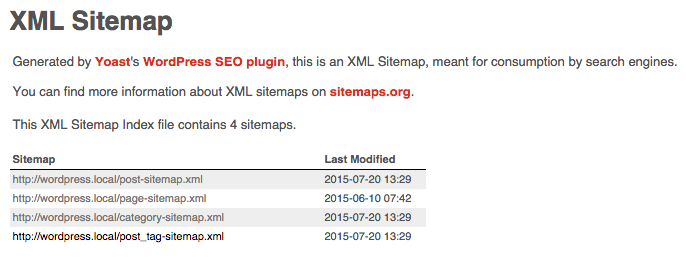
Comparing The Sitemaps
As you can see, the sitemaps follow a different logical structure. Yoast uses type archives like, i.e. post-sitemap.xml, page-sitemap.xml, category-sitemap.xml and so on.
Google XML Sitemaps have more sub sitemaps. It sections your content into monthly archives, for example: http://wordpress.local/sitemap-pt-post-2015-06.xml.
There aren’t a lot of specific resources on sitemap best practices that go into this level of detail but if I had to choose, I would go with the way Google XML Sitemaps does it. My reasoning has to do with limits imposed on the format. The specification says that:
Each Sitemap file that you provide must have no more than 50,000 URLs and must be no larger than 10MB
With the month-based separation that Google XML sitemaps uses, the corresponding file is more likely to have no more than 100 or so URLs — which will then be small enough to be measurable in kilobytes rather than megabytes. This will lower the strain on the server when generating the files and is also likely to be more easily digestible by Google itself. That said, however, for regular websites creating just a few new posts/pages a day, this argument is basically negated anyway.
The Bottom Line
At the end of the day, the only thing that matters is that both products generate a valid XML sitemap that Google, Bing, and other search engines will love. Google XML Sitemaps does give you more options, which is nice, but most of us won’t really need such granular control over our content.
If you do need the additional options, I suggest using Google XML Sitemaps in conjunction with Yoast — in which case, just be sure to switch Yoast’s sitemap features off.
For the rest of us, the answer is pretty clear: if you’re already using Yoast, there’s really no real need to use Google XML Sitemaps as well.